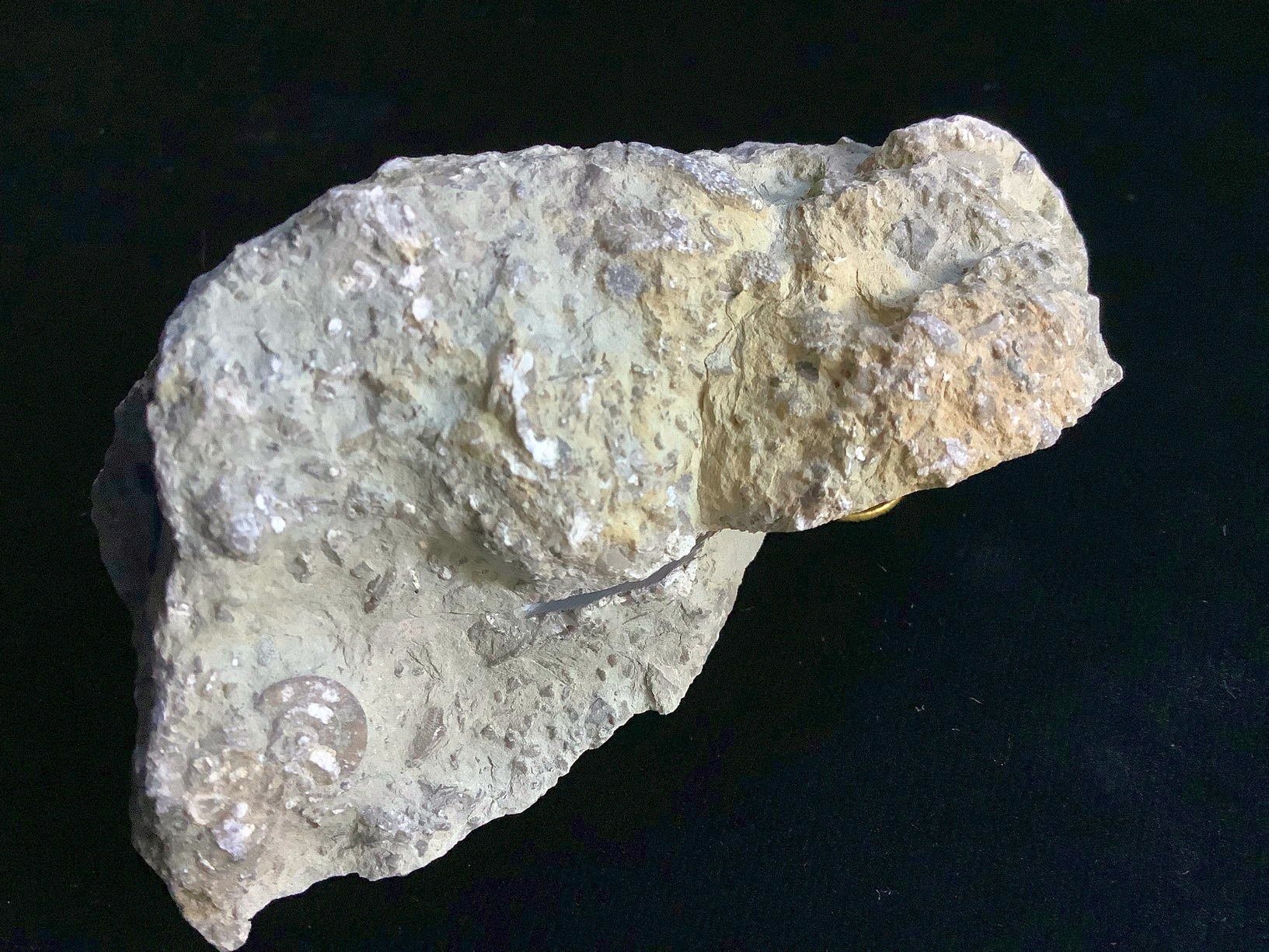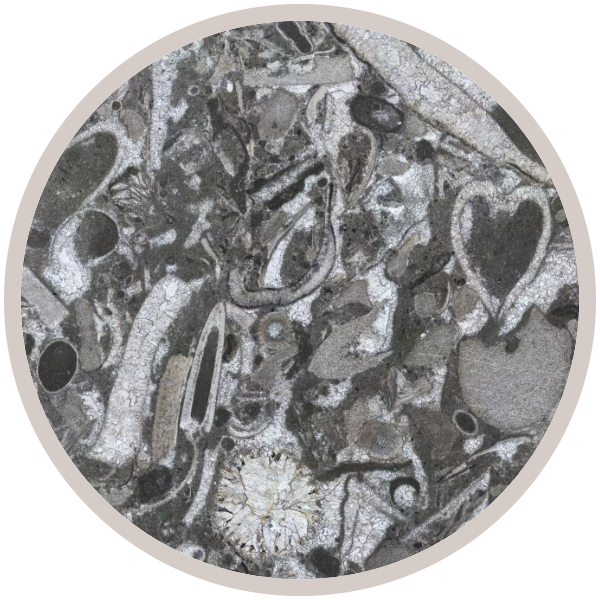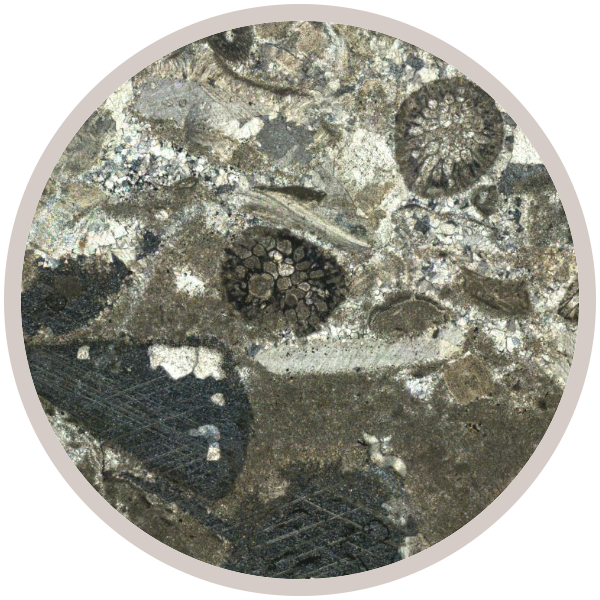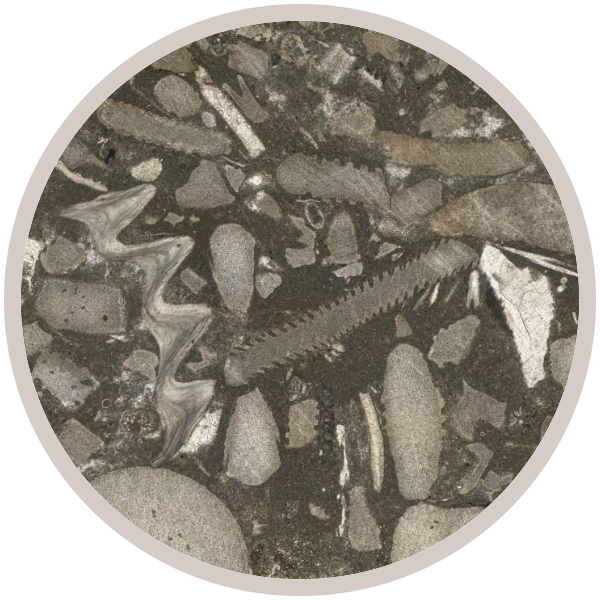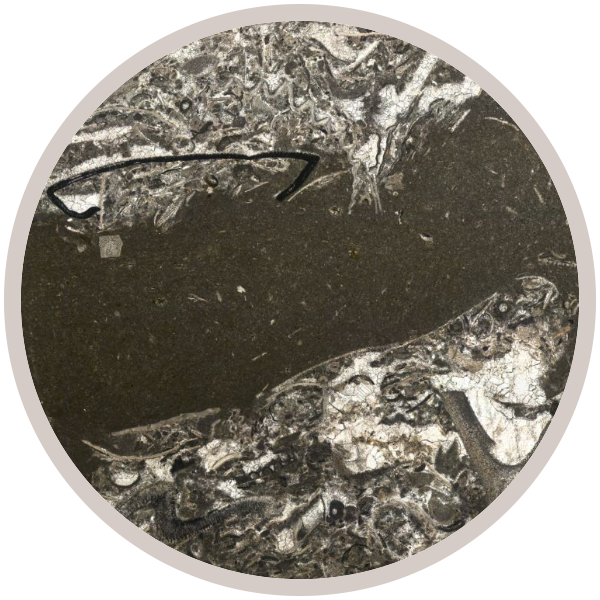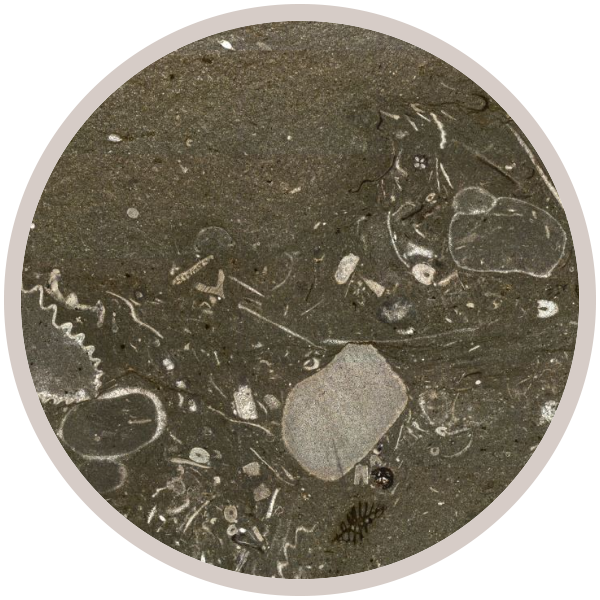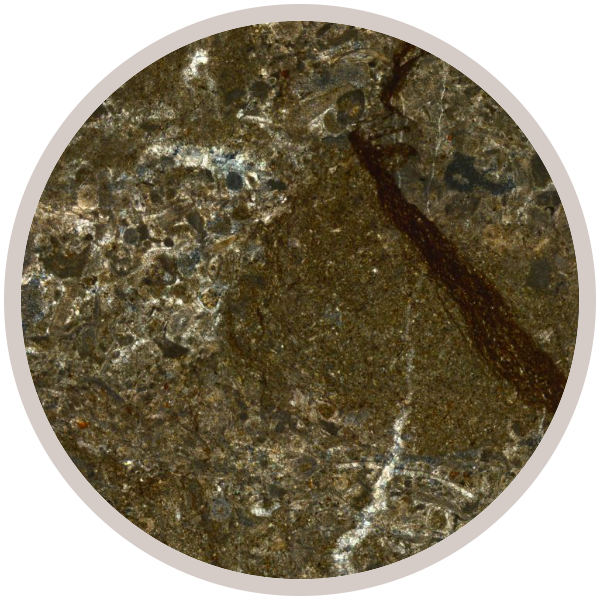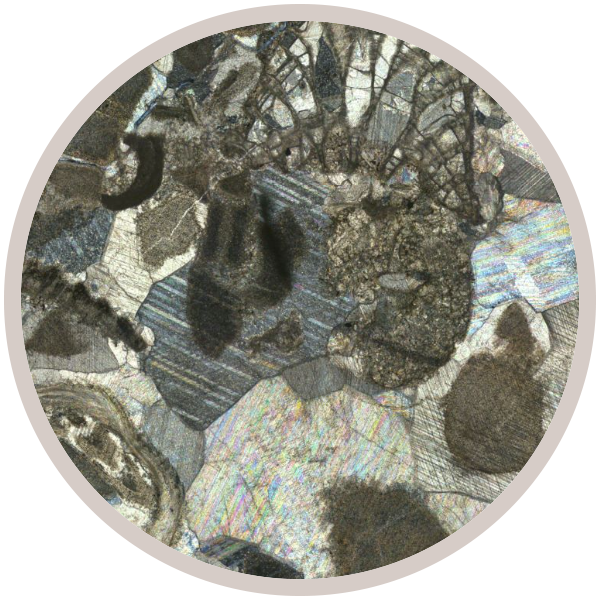
Fact sheet
Pale Silurian limestone of Wenlock age, containing a rich variety of well-preserved fossils and fossil fragments set in a matrix of crystalline calcite (sparite) cement. This sample was collected from scree at the famous 'rippled beds' locality.
The limestone was laid down in a shallow tropical sea south of the equator around 428 million years ago. The area of Wren's Nest featured small coral reefs teeming with life, separated by shallow banks and troughs of lime mud. This sample was likely deposited near a reef, with a high proportion of shelly debris and little micrite. The spaces between the bioclasts instead became filled, possibly much later, with a sparry calcite cement. In several locations in this thin section, this sparry cement forms syntaxial overgrowths, where the calcite crystals in the cement overgrow a bioclast in the same crystallographic orientation, displaying optical continuity. This is clearly visible on echinoderm plates, which are formed of single calcite crystals, such as the cluster of three plates at (14.0, 1.7) - the bioclasts are brown while the sparry cement is clear.
The limestone reefs nearby were home to compound and solitary corals, bryozoans, crinoids, brachiopods, gastropods, cephalopods and trilobites. Bioclasts in this assemblage are dominated by echinoderm plates and crinoid stems, but fibrous and ribbed brachiopod shells, corals and bryozoans also occur.
This sample was collected as part of the 'Macro to Micro' project.
This Collection showcases the geodiversity of a classic geological site: the Wren's Nest National Nature Reserve in the West Midlands.
As well as displaying thin section and hand specimen views along with information setting them in the context of their landscapes, we also include perspectives and creative responses to the geological heritage of the sites from the local community.
| Explore the stories of the rock layers at Saltwells and Wren's Nest NNRs, designed by students at King Edward VI School, Stourbridge: |
This Collection was made possible by funding awarded to the 'Macro to Micro' project by the Natural Environment Research Council (NERC) under their 'Growing Roots' scheme.
